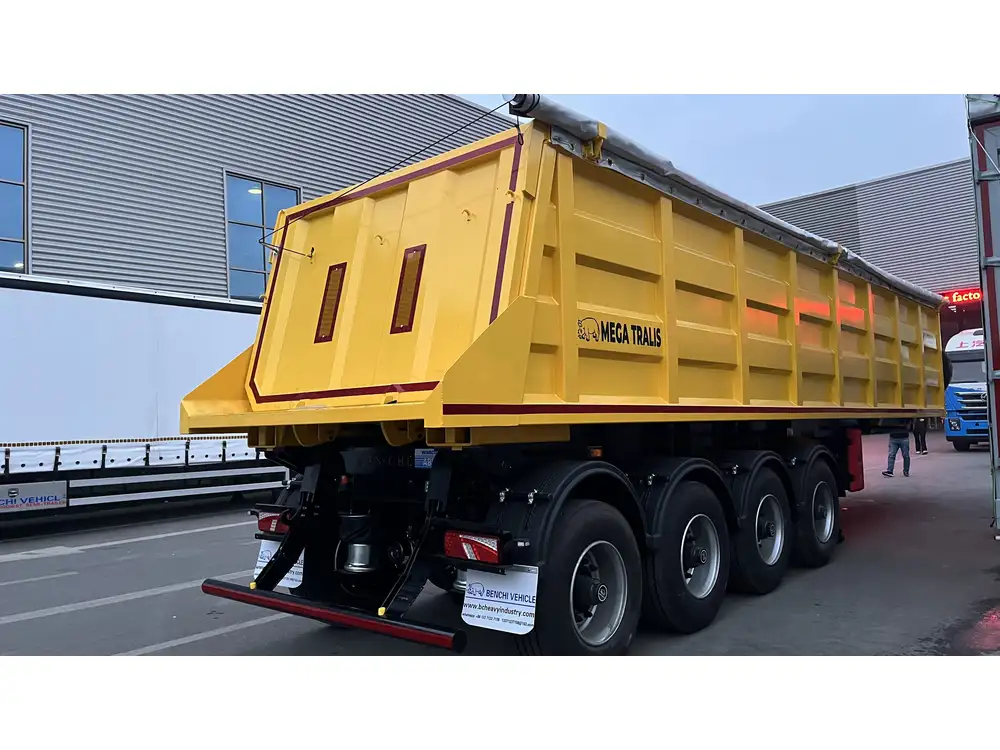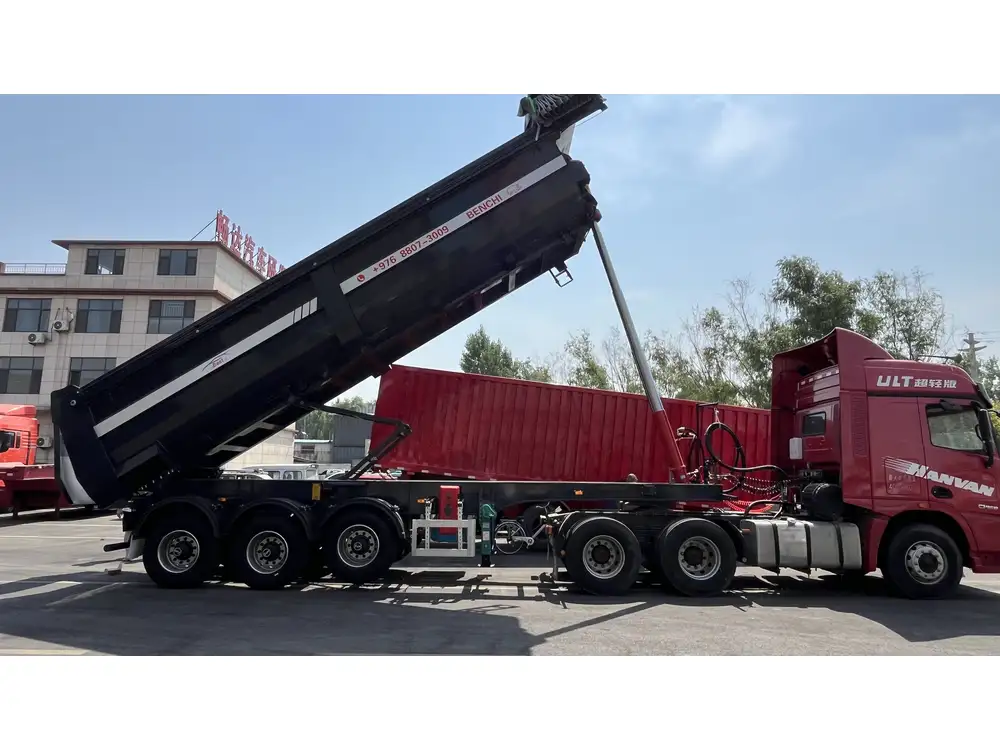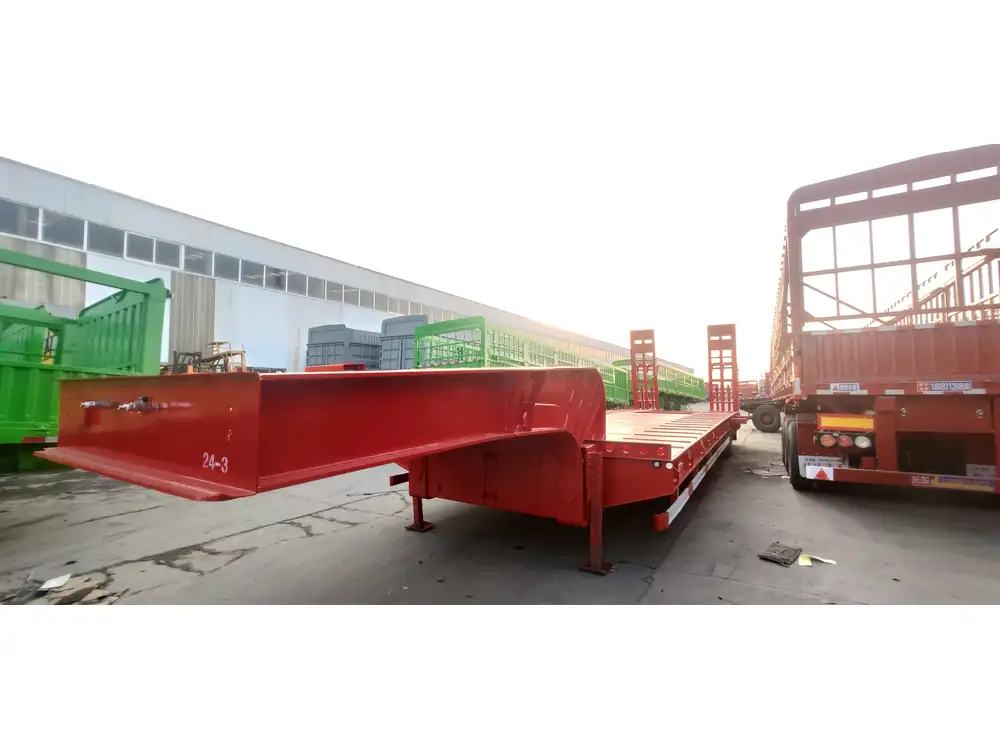Understanding the cost of a semi-truck trailer can be intricate, influenced by multiple variables that can fluctuate based on market trends, trailer specifications, and overall demand. For those navigating the logistics and transport industry, making an informed decision about purchasing a semi-trailer is critical. This guide will provide an in-depth examination of the factors affecting trailer prices, break down the costs associated with various types of trailers, and ultimately assist you in determining the overall investment required for your hauling needs.
Types of Semi-Trailers and Their Costs
1. Flatbed Trailers
Flatbed trailers are a versatile choice for transporting large, bulky goods. Their open structure simplifies loading and unloading, making them ideal for construction materials, machinery, and oversized loads.
| Type of Flatbed | Average Cost |
|---|---|
| Standard Flatbed | $30,000 – $50,000 |
| Lowboy Flatbed | $40,000 – $70,000 |
| Step Deck Flatbed | $35,000 – $55,000 |
| Extendable Flatbed | $50,000 – $80,000 |

2. Dry Van Trailers
Dry van trailers are enclosed units that protect goods from weather and road debris. They are the preferred choice for transporting consumer goods and retail products.
| Type of Dry Van | Average Cost |
|---|---|
| Standard Dry Van | $25,000 – $45,000 |
| Temperature-Controlled Van | $40,000 – $70,000 |
| High Cube Dry Van | $30,000 – $55,000 |
3. Refrigerated Trailers (Reefers)
Refrigerated trailers are essential for transporting perishable goods. The integrated cooling system adds complexity and cost.
| Reefer Trailer Type | Average Cost |
|---|---|
| Standard Reefer | $50,000 – $80,000 |
| Multi-Temperature Reefer | $70,000 – $100,000 |
4. Tank Trailers
Tank trailers are designed for transporting liquids, gases, or dry bulk. Their construction requires specific materials and safety features, impacting their price.
| Type of Tank Trailer | Average Cost |
|---|---|
| Standard Tank Trailer | $50,000 – $100,000 |
| Specialty Liquid Tank | $75,000 – $130,000 |
| Dry Bulk Tank | $60,000 – $110,000 |

Factors Influencing Trailer Prices
A. Trailer Size and Specifications
The size of the trailer plays a crucial role in determining its price. Typically, larger trailers cost more due to additional materials and engineering. Furthermore, specialized equipment, such as ramps, winches, or divider walls, can significantly impact pricing.
B. Material Composition
Materials used in trailer construction can vary significantly. Steel frames and aluminum bodies are common, but advanced composite materials may offer durability and lower weights, albeit at a higher price point. For instance, an aluminum flatbed trailer can cost 15-20% more than its steel counterpart but offers added performance benefits.

C. Manufacturer Reputation
The reputation and reliability of the manufacturer also affect pricing. Established brands with a history of quality might command higher prices, reflecting their commitment to durability and customer service. Buyers may consider the long-term value over initial costs.
D. Customization and Additional Features
Customized trailers typically incur additional costs. Options like built-in toolboxes, specialized lighting, and custom paint jobs can drive costs up. Conversely, investing in specialized features may enhance efficiency and lead to better returns over time.
E. Market Conditions
Market demand for semi-trailers can fluctuate based on the economy. During boom periods, prices may rise due to increased demand for transportation services, whereas in downturns, prices might be more competitive. Monitoring the market can lead to better purchasing decisions.

Long-Term Cost Considerations
1. Maintenance and Repairs
Owning a semi-trailer incurs not only purchase costs but also ongoing maintenance. On average, an owner can expect to spend about 10-15% of the trailer’s purchase price annually on maintenance, including tire replacements, brake servicing, and structural inspections.
2. Insurance Costs
Insurance rates for semi-trailers can vary based on type, purpose, and value. On average, policy costs can range from $1,200 to $3,000 yearly, depending on coverage levels. It’s crucial to explore options and tailor policies to match your operational profile.

3. Resale Value
When considering the total cost of ownership, it’s wise to evaluate the potential resale value of the trailer. Trailers often depreciate over time, but certain models, particularly those known for robustness, hold their value well. Researching historical market trends can aid in estimating future resale values.
Comparison of Financing Options
Investing in a semi-trailer often requires financing. Here’s a comparative table of popular financing options:
| Financing Option | Pros | Cons |
|---|---|---|
| Bank Loans | Lower interest rates | Strict qualification criteria |
| Lease Agreements | Lower upfront costs | No ownership at lease end |
| Financing through Dealers | Convenience and immediate availability | Possibly higher interest rates |
| Equipment Financing Companies | Specialized terms for trailer financing | May require collateral |
FAQs About Semi-Trailer Costs

How Do I Choose the Right Trailer?
Choosing a suitable trailer depends on your specific freight needs. Consider the type of goods you transport, the distances involved, and any special requirements (e.g., refrigeration for perishables). It’s also beneficial to evaluate available loading/unloading facilities.
What Should I Know Before Purchasing a Used Trailer?
When buying a used trailer, inspecting for wear, damage, and overall condition is paramount. Request service records and verify ownership history. Additionally, conducting a thorough pre-purchase inspection can help uncover potential issues that could lead to costly repairs later.
Are There Tax Benefits for Buying a Trailer?
Purchasing a semi-trailer may qualify for tax deductions under Section 179. This allows businesses to write off the trailer’s cost, thereby reducing taxable income. Consult with a tax professional or accountant for detailed insight into eligibility and implications.

Can I Rent a Semi-Trailer Instead of Buying?
Renting can be a viable solution for businesses needing temporary capacity. It reduces upfront expenses and allows flexibility as demand fluctuates. However, consider the long-term costs, as continuous rentals may exceed purchasing costs over time.
Conclusion
Navigating the complexities of semi-trailer costs involves considering various factors, from the type and specifications to long-term ownership expenses and financing options. By understanding the landscape of trailer pricing and the financial implications of ownership, fleet operators can make well-informed decisions that align with their operational requirements and budget. Whether you require a standard dry van, a reefer for perishables, or a specialized tank trailer, this comprehensive overview serves as a resource to guide your purchasing strategy.
In a market where every dollar counts, equipping yourself with knowledge about semi-trailer costs can lead not only to immediate savings but also solidify your long-term profitability. As you embark on your purchasing journey, remember that the cheapest option may not always equate to the best value—focus on quality, efficiency, and suitability for your unique logistical demands.



